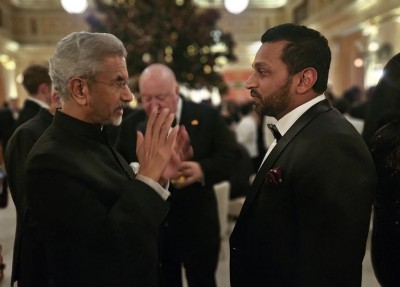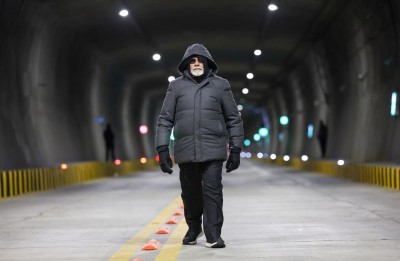
Rajnath Singh approves New Prison Manual 2016
The key revisions in the new Manual include the following -
(i) Access to free legal services
A new chapter on legal aid (Chapter XVI) has been incorporated in the Model Manual. Article 39A of the Constitution calls for free legal aid to the poor and weaker sections of society and seeks to ensure justice for all. The additions include:
 Appointment of jail visiting advocates;
 Setting up of a legal aid clinic in every prison;
 Legal literacy classes in prisons;
 Constitution of under-trial review committee and provisions to ensure legal services for under-trial prisoners who have undergone half of the maximum sentence for that offence.
(ii) Additional provisions for women prisoners
Safety and reformation of women prisoners are of utmost importance in prison administration. Health of women prisoners has also been recognised as a focus area warranting special attention. With this in mind, the following have been provided in the revision:
 Comprehensive health screening for women prisoners, including tests to determine presence of sexually transmitted or blood-borne diseases, mental health concerns, existence of drug dependency, etc. This is drawn from the United Nations Rules for the Treatment of Female Prisoners and Non-Custodial Measures for Women Offenders adopted by the UN General Assembly (UN Bangkok Rules);
 Sensitising the staff and imparting training relating to gender issues and sexual violence;
 Educating women about preventive health-care measures;
 Enabling proper counselling and treatment for those suffering from psychological disorders;
 Focussed after-care and rehabilitation measures to ease women’s re-integration into society;
 Restrictions on certain kinds of punishments being awarded to women, for instance, punishment by close confinement should not be awarded to pregnant women, women with infants, etc.;
 Counselling programmes focussed on women, especially those who have been victims of abuse and focus on removing any further damage that imprisonment may have on a female inmate.
(iii) Rights of prisoners sentenced to death
The Supreme Court, in Shatrughan Chauhan v. Union of India and Others observed that “… the legal procedure adopted to deprive a person of his life or liberty must be fair, just and reasonable and the protection of Article 21 of the Constitution of India inheres in every person, even death-row prisoners, till the very last breath of their lives.” To this end, the Court laid down certain guidelines in respect of prisoners sentenced to death which have been echoed in the Manual recognising the necessity of ensuring the human rights of such prisoners. These have been incorporated in new Chapter XII (Chapter XI of the 2003 Manual) and broadly include:
 Provision of legal aid to prisoners sentenced to death at all stages, even after rejection of mercy petitions;
 Regular mental health evaluation for death row prisoners;
 Physical and mental health reports to certify that the prisoner is in a fit physical and mental condition;
 Procedure and channels through which mercy petitions are to be submitted;
 Communication of rejection of mercy petitions;
 Furnishing necessary documents, such as court papers, judgments, etc. to the prisoners;
 Facilitating and allowing a final meeting between a prisoner and his family.
(iv) Modernisation & Prison computerisation
Additions have been made to the Manual to encourage use of technology/ software systems where possible, including introduction of a Personal Information System for recording information relating to inmates (incorporated in Chapter V – Custodial Management). Also, any register required to be maintained by the prison authorities has also to be in an electronic form. In line with the Supreme Court’s directions in D.K. Basu v. State of West Bengal and Ors provisions have been included (in Chapter II – Institutional Framework) for installation of CCTV cameras in work sheds, kitchens, high security enclosures, main gate, etc. of prisons to prevent violation of human rights.
(v) Focus on after-care services
The Manual recognises that it is the States’ responsibility to devise and develop mechanisms for rehabilitation of released convicts (in Chapter XXII – After-Care and Rehabilitation). It is envisaged that special committees known as Discharged Prisoners’ After-Care and Rehabilitation Committees should be set up at the district or State level for planning and devising appropriate mechanisms for rehabilitation and after-care assistance to prisoners.
(vi) Provisions for children of women prisoners
In R.D. Upadhyaya v. State of A.P. and Others the Supreme Court issued guidelines in respect of children of women prisoners. While acknowledging some positive steps taken in this regard, the Court noted that “a lot more is required to be done in the States and Union Territories for looking after the interest of the children” and went on to issue guidelines to ensure holistic development of children of women prisoners inside prisons and pregnant prisoners. While certain guidelines already found mention in the 2003 Model Manual, several States are yet to have adopted these. Additional provisions (in line with the Supreme Court guidelines) have been incorporated in Chapter XXVI – Women Prisoners (Chapter XXIV of the 2003 Manual) and include:
 Provisions for holistic development of children, including provision of food, medical care, clothing, education, and recreational facilities;
 Providing pre-natal and post-natal care to pregnant women offenders;
 Taking care of nutritional requirements of children and provision of clean drinking water;
 Ensuring a well-equipped crèche and a nursery school for children to be looked after.
(vii) Organisational uniformity and increased focus on prison correctional staff
The organisational hierarchy set forth in Chapter III (Headquarters Organisation) has been streamlined with increased focus on the Correctional Wing, and engagement of professionally qualified counsellors/ psychiatrists for counselling needy prisoners, especially those suffering from substance-related addictive disorders.
(viii) Inspection of Prisons
A new chapter on inspection of prisons has been incorporated as Chapter XXVIII providing for (a) informal inspections to be carried out by senior prison officers, and (b) formal inspection to be carried out by a designated Inspector Officer. The formal inspection (which is more detailed) covers aspects such as mess facilities, medical facilities, hygiene, high security enclosures, etc. and would be a thorough review of the prison. This could help identify existing issues and deficiencies which could then be remedied through appropriate action.
(ix) Other revisions
 Insertion of a new chapter on repatriation of prisoners (Chapter X) in line with the advisory issued by the Ministry of Home Affairs on the subject dated 10th August, 2015;
 Bringing uniformity and clarifying provisions regarding remission (Chapter XVIII),
 Usage of the commonly used terms ‘parole’ and ‘furlough’ in place of leave and special leave (Chapter XIX) and setting out in detail the objective behind parole and furlough and the procedure for the same;
 Bringing medical services within the domain of the State Medical Services/ Health Department instead of the prison department (Chapter VII);
 A more comprehensive and relevant security classification for high-risk offenders (Chapter XXV);
Shri Rajnath Singh in the National Seminar on Prison Reforms organized by NHRC on 13th -14th November, 2014 in his valedictory address committed to have a quick revision of the provisions of Model Prison Manual, 2003 in the light of recent Supreme Court judgments and International Conventions/Covenants like the recently revised Nelson Mandela Rules 2015, to which India is a party.
Accordingly, a committee to propose changes to the Model Prison Manual 2003 was constituted by Ministry of Home Affairs in the Centre-State Division on 11.12.2014 on the directions of the Union Home Minister. The committed was chaired by Shri Kumar Alok, Joint Secretary (CS), Centre State Division, MHA and consisted of representatives from BPR&D, NHRC, NALSA, prisons, legal and technical areas of the Ministry among others.
The Expert committee extensively reviewed the existing model prison manual and whole draft chapters were discussed by the members threadbare and the suggestions/modifications were incorporated in the draft chapters. This was also followed by peer review and extensive consultations to ensure that the new draft is aligned with the contemporary prison jurisprudence.
The new manual will be sent to the States/UTs for guidance soon.
Support Our Journalism
We cannot do without you.. your contribution supports unbiased journalism
IBNS is not driven by any ism- not wokeism, not racism, not skewed secularism, not hyper right-wing or left liberal ideals, nor by any hardline religious beliefs or hyper nationalism. We want to serve you good old objective news, as they are. We do not judge or preach. We let people decide for themselves. We only try to present factual and well-sourced news.







